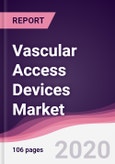What is Vascular Access Device?
Vascular Access Device are medical equipment’s used to get ingress the blood stream to supply medicines, administer fluids, nutritional components and collection of blood vessels and its products. These vascular access tubes are made from latex, silicon and other substances.
What are the major applications of Vascular Access Device?
A Venous Access Device basically allows admixture of solution which consists of nutritional or medication components without inducing problems that may occur in an Intravenous. Using VAD reduces the stress, pain and discomfort of repeated injection of needle stirenge. VAD usage is specifically for patients suffering with prolonged illness and requires continuous medication such as chemotherapy. Very specifically PICC is required when fluids or medicines are causing irritation in the wall of the veins. Catheters is an only solution to deeply access the circulatory system during the hemodialysis process.electric transformer.
Vascular Access Devices Market
Market Research and Market Trends of Vascular Access Device
Hospira Infusion System has been completely acquired by ICU Medical recently. This HIS consists of VAD, medical solutions and Intravenous pumps when joined with the company’s current business portfolio, will make ICU Medical as the world’s predominant player in the infusion therapy market. It is predicted that this acquisition gives ICU Medical a remarkable developed global impression and platform for long-term strength to compete and growth. With an Integrated product portfolio, the company become the leader in the market share and have in-depth access in the US Market.
Needle is the key element in venous access device (VAD) for the infusion of medical fluids. But, recently needle-free VAD was introduced. Researchers stated that it would be the future generation of PIVO when it comes to enhance the experience of drawing blood from patient’s body, and lessen the uncertainty for both the practitioners and patients. This device will easy to use and will have high volume production. The FDA has been cleared for the usage of this device in US, which shows that there will be a huge impact in the PIVO market in US.
Vascular Catheter devices is not only for the transfusion of blood and other medical fluids. Recently trended catheters such as Grid Mapping Catheters, which is sensor enabled device provides image capturing and data analysis in an impressive way to form a crystal clear maps of the heart valves to differentiate unhealthy and healthy tissues and other unwanted formation inside the heart valves. Since, it has unique features compared to other catheters, it is predicted that it would have huge demand in the medical applications.
Who are the Major Players in market?
The key players operating in the Vascular Access Device Market are C.R. Bard Inc., Navilyst Medical Inc., Terumo Corp., Becton., Smiths Medical Inc., Nipro Medical Corp., and other 10 more companies.
What is our report scope?
The report incorporates in-depth assessment of the competitive landscape, product market sizing, product benchmarking, market trends, product developments, financial analysis, strategic analysis and so on to gauge the impact forces and potential opportunities of the market. Apart from this the report also includes a study of major developments in the market such as product launches, agreements, acquisitions, collaborations, mergers and so on to comprehend the prevailing market dynamics at present and its impact during the forecast period 2020-2025.
Key Takeaways from this Report
- Evaluate market potential through analyzing growth rates (CAGR %), Volume (Units) and Value ($M) data given at country level – for product types, end use applications and by different industry verticals.
- Understand the different dynamics influencing the market – key driving factors, challenges and hidden opportunities.
- Get in-depth insights on your competitor performance – market shares, strategies, financial benchmarking, product benchmarking, SWOT and more.
- Analyze the sales and distribution channels across key geographies to improve top-line revenues.
- Understand the industry supply chain with a deep-dive on the value augmentation at each step, in order to optimize value and bring efficiencies in your processes.
- Get a quick outlook on the market entropy – M&A’s, deals, partnerships, product launches of all key players for the past 4 years.
- Evaluate the supply-demand gaps, import-export statistics and regulatory landscape for more than top 20 countries globally for the market.
Table of Contents
Methodology

LOADING...








